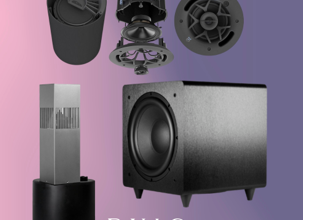How to Mix and Match Fonts for Visual Harmony

Typography is a critical element in design. The way fonts are chosen and combined can elevate a message, enhance readability, and create a cohesive visual experience. Mixing and matching fonts effectively is both an art and a science, it requires an understanding of typefaces, their personalities, and how they interact on a page or screen. Here’s how to mix and match fonts to achieve visual harmony in your designs.
Create Contrast, But Don’t Clash
Successful font pairings rely on contrast, not conflict. Pair fonts that are distinct enough to show a difference but not so wildly different that they look mismatched. For example, pairing a serif font for headings with a sans-serif font for body text creates visual interest and easy readability. A common pairing is Playfair Display (serif) with Open Sans (sans-serif), balancing elegance with simplicity.
Avoid using two fonts that are too similar, such as two serif fonts with slight variations. This can appear as an accidental mismatch rather than an intentional design choice.
Limit the Number of Fonts
To maintain visual harmony, limit your design to two or three fonts. Using more than that can create visual clutter and distract the viewer. One font can be used for headings, another for body text, and possibly a third for accents like quotes or callouts. Consistency in font use keeps your design clean and professional.
Use Font Superfamilies
Font superfamilies are groups of related fonts that include multiple styles (e.g., serif, sans-serif, bold, light, italic) designed to work together. These offer the flexibility of mixing different styles while maintaining a unified look, which is perfect for designers who want variety without sacrificing harmony.
See also: How Life Coaching Helps You Reach Your Full Potential
Pay Attention to Hierarchy and Scale
Font pairing isn’t just about choosing the right typefaces — how you use them matters too. Establish a clear visual hierarchy by varying the size, weight, and style of your fonts. Headlines should be bold and prominent, subheadings a bit smaller, and body text the most readable.
Scale helps guide the viewer’s eye through the content. A dramatic difference in size between headings and body text creates emphasis and interest. For example, using a large, elegant serif headline paired with a modest sans-serif paragraph ensures your design feels organized and readable.
Consider Mood and Tone
Fonts convey emotion. A typeface used for a wedding invitation is likely unsuitable for a tech startup’s landing page. Match the tone of the fonts with your message. For a formal document, a classic serif might be appropriate, while a fun, vibrant poster could use bold display fonts.
Always ask yourself: Do the fonts reflect the brand’s voice or the content’s intent? If the answer is no, rethink the pairing.
Test and Refine
Finally, always test your font combinations across different platforms and screen sizes. What looks good on a large desktop screen might not be as legible on a mobile device. Use mockups to preview your design in context, and don’t be afraid to adjust spacing, alignment, or even swap fonts entirely if they don’t feel right together.
Conclusion
Mixing and matching fonts successfully is about balance — balancing contrast and cohesion, creativity and clarity. By understanding font types, creating hierarchy, and keeping consistency, you can craft designs that are both aesthetically pleasing and highly functional. Whether you’re designing a website, a poster, or a presentation, harmonious font pairing can make all the difference.





